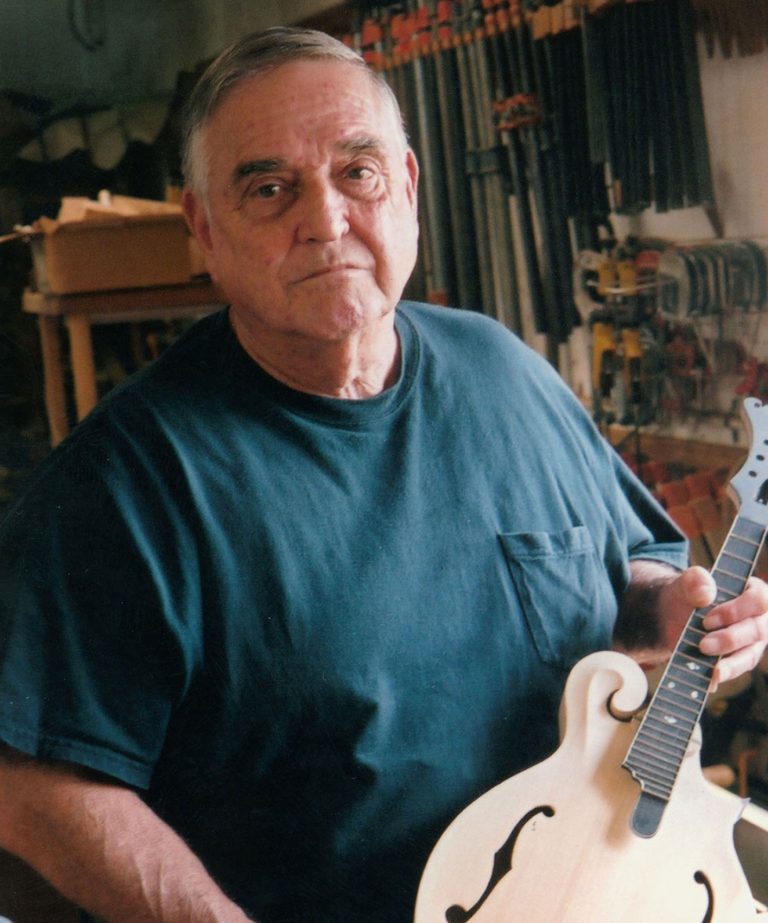Fred Allsworth was born in 1937 in Purvis, Mississippi. His father was a Methodist minister, and the family followed him as his calling took to jobs all over south Mississippi. Allsworth went to college at the University of Southern Mississippi, and became a teacher, arriving in Heidelberg as assistant football coach and math instructor in 1960. He has lived there since, working not only as a teacher, but also as a high school principal, and substitute rural mail carrier. He has retired from those jobs but remains busy making guitars, mandolins, and dulcimers in a beautifully-appointed shop behind his house.
This enthusiasm was not part of his family history, but rather an extension of an earlier hobby in cabinetry and furniture building. Allsworth is basically self-taught both as a general woodworker and luthier and has been deeply involved in guitar building for just eleven years. He has always loved music but did not consider himself talented in the direction of performing, and so found this route into the world of beautiful sounds.
Allsworth does not consider himself an authority on how to build instruments but enjoys the fact that others like to play his creations. He is made over thirty classical and steel-stringed guitars, eight mandolins, over a hundred lap dulcimers, several ukuleles, and many other instruments.
When he gets ready to make an instrument, the first aspect of the job for Allsworth is choosing the type of wood he will use. There is a range of woods that work, and most of them are not local, so they must be ordered. He sometimes obtains book-matched (mirror-image) pairs of pieces for the top and for the back, and sometimes buys a larger slab and cuts the thin pieces himself. The soundboards are made of various types of spruce or cedar, and the backs from a variety of hardwoods centering on the various types of rosewood and of mahogany. His stock of the usual and also many unusual types of wood is remarkable in extent and in quality, both of the traditional imported woods and local woods. He describes himself as a “wood freak.”
After seasoning the wood in his shop, Allsworth joins, decorates, braces, and “tap-tunes” the tops. The sides must be bent on a hot iron, then the backs assembled much as were the tops. Then the neck, fretboard, bridge, etc. are hand-built: “Machinery gets you to a point, and then it’s all handwork,” he notes.
His instruments range from fairly plain to incredibly elaborately decorated, but very few are custom built. He follows his own fancy. The characteristics of a beautiful piece of wood can suggest to Allsworth an instrument to create from it, both its shape and appropriate decoration. “The wood itself is the driving force behind what I do.” He enjoys the challenge of doing new things, a challenge sometimes posed by the materials, and sometimes that he sets for himself. That is why he started making mandolins, which are difficult both because of their relatively small size and intricacy (in both construction and finishing) and because the top and back must be carved.
The only advertisement Allsworth uses to promote his work is word-of-mouth, but few of his instruments remain in the shop. Many of his customers play for their own enjoyment, and others in bands, but the quality that joins the individuals that are drawn to his instruments is that they want something beautiful, unique, and personal.
–Chris Goertzen

